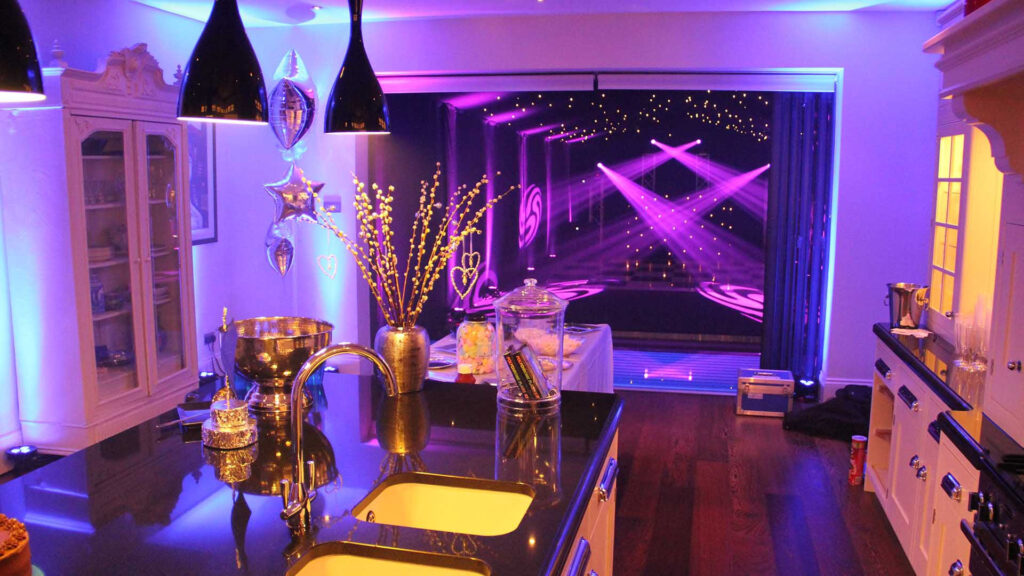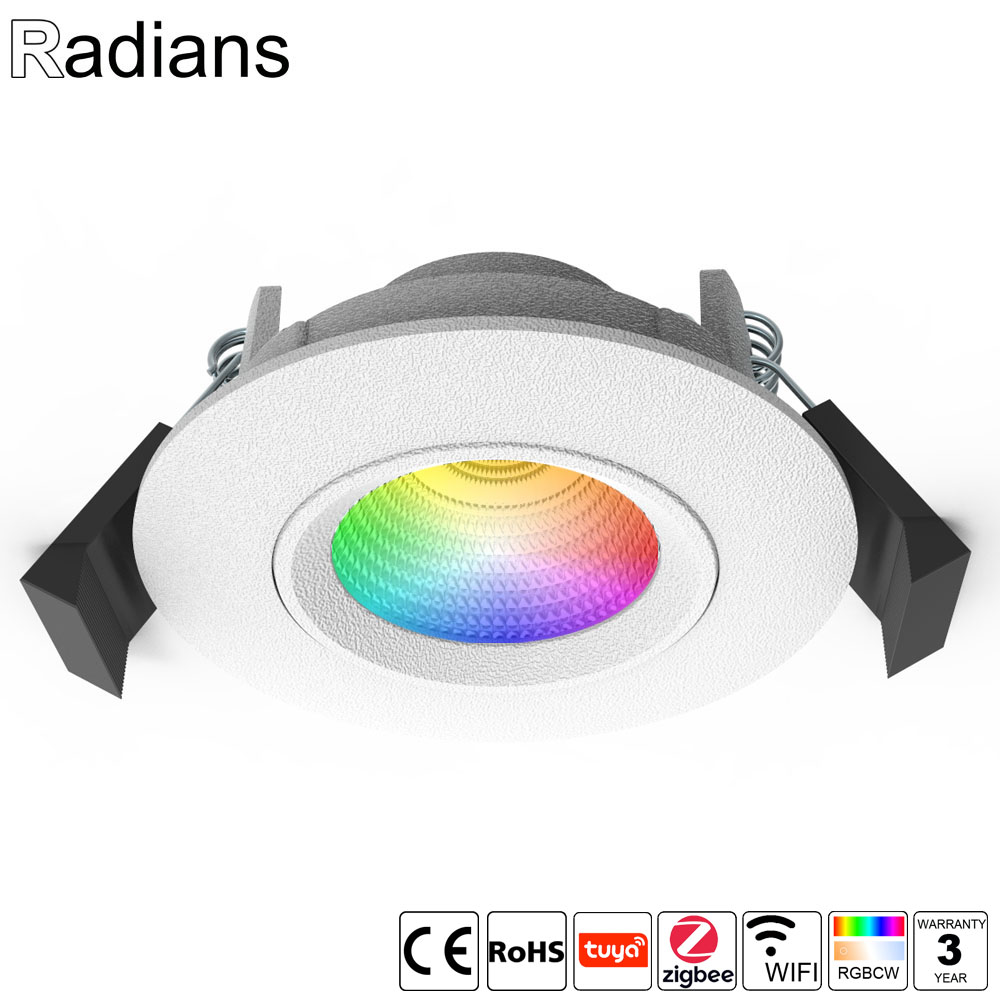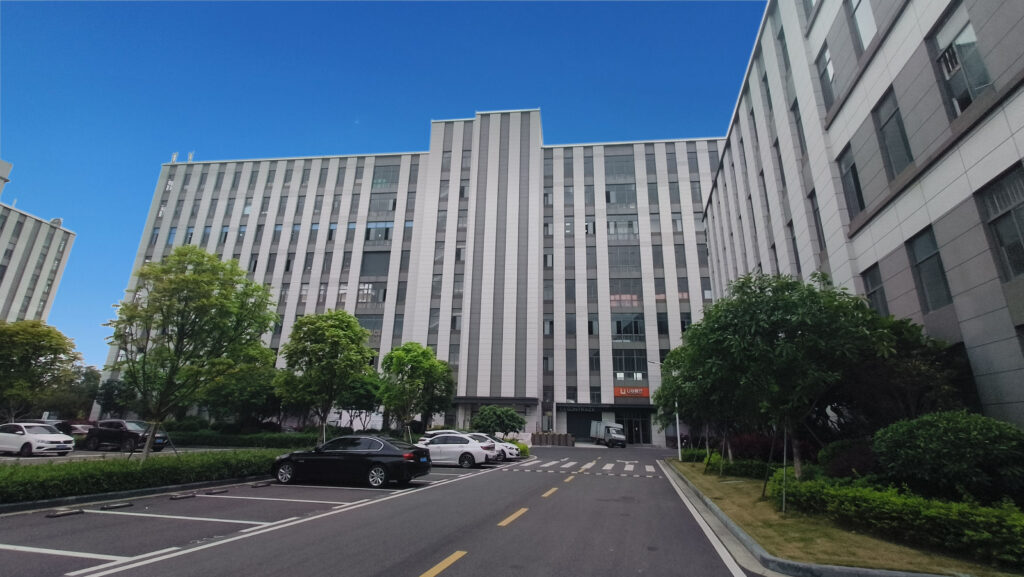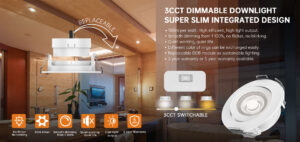The rapid advancement of technology and the continuous progress of society have significantly influenced people’s pursuit of material comforts. In daily life, the basic illumination provided by traditional lighting fixtures no longer meets the growing demands of consumers. Today, individuals seek lighting solutions that cater to their deeper emotional needs. As a result, smart lighting systems are becoming increasingly commonplace in households, with smart fixtures emerging as an essential component of these systems. Like many products, users expect smart lighting to enhance their experience while also allowing for personal expression.
The Current Landscape of Smart Lighting
What is Smart Lighting?
Lighting is arguably one of the first household electrical appliances that we encounter. However, as technology has evolved, the fundamental purpose of lighting—to provide illumination—has become insufficient for many users. The demand for higher-quality lighting has led to the emergence of smart lighting. Smart lighting are integral to smart lighting systems, functioning as execution components. In addition to basic components like light sources and control devices, smart lighting typically include lighting controllers and sensors, and sometimes gateways. In simple terms, smart lighting refers to fixtures equipped with sensing, communication, and processing capabilities.Compared to conventional lighting, smart fixtures offer numerous advantages:
- Simplified Wiring: Traditional lighting require extensive planning and installation before renovation, which can be complicated and costly. Smart fixtures significantly streamline this process.
- Convenient Control: Conventional switches are often wall-mounted, which can disrupt aesthetics and be inconvenient to use. In contrast, smart lighting offer various control methods that users can choose from based on their preferences.
- Versatile Modes: Traditional lighting often lacks flexibility in usage scenarios. Smart lighting can easily adjust settings based on different environments.
- Energy Efficiency: Smart lighting can automatically turn off when no one is present, effectively reducing energy waste.
Control Methods for Smart Lighting
Smart lighting can be controlled through four primary methods:
- Remote Control: Devices that send radio signals for control. Users can operate them via smartphones or dedicated remote controls.
- Bluetooth: A wireless technology standard that enables short-range data exchange between fixed devices, mobile devices, and personal area networks. While Bluetooth allows multiple connections and solves data synchronization issues, it has drawbacks such as high power consumption and limited network capacity.
- Wi-Fi: This wireless technology offers a broader communication range than Bluetooth and faster transmission rates but may have lower security.
- Zigbee Technology: A low-power wireless protocol based on IEEE 802.15.4 standards, Zigbee is characterized by its low speed and energy consumption while supporting numerous network nodes.
Market Overview
The smart lighting market has experienced rapid growth in recent years. By 2024, the global market size is projected to approach $16 billion, with expectations to exceed $18 billion by 2025, reflecting a compound annual growth rate (CAGR) of 17% to 20%. Key product categories include smart bulbs (40%), smart light strips (20%), smart table lamps and chandeliers (15%), smart control systems (10%), and outdoor lighting (10%). As a major production hub for smart lighting globally, China faces significant market opportunities alongside certain challenges.
Future Development of Smart Lighting
Technological Advancements Driving Growth
Recent breakthroughs in semiconductor technology, sensor technology, communication technology, and artificial intelligence have paved the way for smarter lighting solutions. High-brightness LED chips provide excellent illumination quality; micro-sensors can accurately detect ambient light, temperature, and human activity; advanced communication technologies such as Wi-Fi, Bluetooth, Zigbee, and emerging 5G networks facilitate connectivity; and AI algorithms enable lights to learn user habits for intelligent decision-making.
Changing Societal Demands
On one hand, consumers increasingly seek enhanced quality of life through lighting that creates specific atmospheres tailored to various settings—be it a cozy home environment or a vibrant commercial space. Smart fixtures meet these needs through adjustable color temperatures and brightness levels.On the other hand, heightened awareness of energy conservation and environmental protection drives demand for energy-efficient solutions. Smart lighting’s ability to provide on-demand illumination aligns with sustainable development goals. Additionally, various industries are recognizing the importance of production efficiency and precise management, leading to widespread applications for smart lighting in sectors such as industrial manufacturing, agriculture, and healthcare.
Core Technologies Shaping Future Smart Lighting
Intelligent Lighting Control Technology
This is at the heart of smart lighting’ functionality. By integrating microcontrollers (MCUs) with related circuitry, these lights can support multiple control methods—allowing users to adjust settings remotely via apps or web platforms regardless of their location.
Internet of Things (IoT) and Communication Technologies
As IoT endpoints, smart lighting must connect with other devices or cloud servers through communication technologies like Wi-Fi, Bluetooth, or Zigbee—each suited for different scenarios based on their strengths.
Advanced Optical Technologies
Future innovations in optical design will extend beyond basic metrics such as luminous flux or color rendering index. New technologies will enable precise beam angle control and optimized light distribution tailored for specific environments—such as exhibition spaces needing targeted illumination or industrial areas requiring uniform light coverage.
Artificial Intelligence and Big Data Applications
AI empowers smart lighting with learning capabilities that allow them to adapt based on user habits and environmental changes. For instance, lights can automatically adjust brightness and color temperature based on learned schedules or real-time data analysis in commercial settings.
Diverse Functions of Future Smart Lighting
Personalized Lighting Experience
Smart lighting allows users to customize their lighting effects according to personal preferences and specific situational needs. Users can easily switch between settings, from a romantic candlelight mode to a bright, efficient workspace, or from soothing warm tones for sleep to vibrant cool hues for energy. This flexibility enables the creation of unique atmospheres in homes, entertainment spaces, and offices.
Health-Conscious Lighting Features
Recognizing the impact of light on human health, smart lighting systems can mimic natural light rhythms. During the day, they provide bright, blue-enriched light similar to sunlight, which helps improve alertness and productivity. At night, they shift to warm tones with reduced blue light content, minimizing disruptions to the body’s circadian rhythm and promoting better sleep. Additionally, these systems can be tailored for specific groups such as the elderly, children, or visually impaired individuals by adjusting parameters like color rendering index to enhance visual comfort.
Energy Management and Conservation
Leveraging intelligent control technologies, smart lighting can sense ambient light levels and human activity in real-time, adjusting brightness accordingly to prevent unnecessary energy waste. For example, lights can automatically turn off in unoccupied rooms or dim during daylight hours when natural light is sufficient. Furthermore, these systems can monitor energy consumption data and provide users with reports that help develop more effective energy-saving strategies, aligning with sustainable development goals.
Safety and Security Enhancements
Some smart lighting solutions incorporate security features such as surveillance cameras and alarm systems. When unusual activity is detected, these lights can flash or emit bright beams to deter intruders while simultaneously notifying users via mobile alerts. This capability is particularly valuable in public areas like warehouses or factories, where enhanced security measures are crucial.
Integration with Other Smart Devices
The future of smart lighting lies in its seamless integration with smart home systems, smart buildings, and smart cities. These lights will work in harmony with other devices such as smart appliances, curtains, door locks, and environmental sensors. For instance, when a smart door lock detects that a homeowner has arrived, the lights can automatically switch to a welcoming mode. In urban settings, streetlights may adjust brightness based on traffic flow or pedestrian presence to optimize both energy use and safety.

Application Scenarios for Future Smart Lighting
Home Environments
In residential settings, smart lighting will be ubiquitous. Chandeliers and ceiling lights can adapt to various entertainment activities like movie nights or gatherings by changing their illumination modes. Bedside lamps can automatically adjust brightness and color temperature to assist with sleep routines. Kitchen lights can provide adequate illumination based on cooking tasks while bathroom mirrors can intelligently switch on or off based on usage patterns—creating a comfortable living experience controlled through a unified smart home platform.
Commercial Spaces
Retail environments such as malls, hotels, and restaurants have high demands for atmospheric lighting. Smart fixtures can create dynamic light shows or change colors to attract customers and enhance brand identity. For example, malls might alter their lighting styles according to seasons or promotional events; hotel lobbies could use intelligent chandeliers to create an inviting atmosphere; restaurants could adjust lighting for different dining experiences—romantic dinners or lively gatherings—while analyzing customer flow data to optimize layout and strategies for improved business performance.
Industrial Manufacturing
In industrial settings, smart lighting enables precise control over illumination based on zones, layers, and time schedules tailored to production processes and personnel activity. Different work areas—like assembly lines or inspection zones—can receive appropriate lighting conditions that boost efficiency and quality. Specialized industrial fixtures with explosion-proof or dust-proof features meet stringent environmental requirements while connecting via IoT technology for remote monitoring and fault prediction.
Agricultural Production
With the rise of facility agriculture, smart lighting plays a critical role in plant factories and greenhouses. By precisely adjusting spectrum output, intensity, and duration of light exposure, these systems provide optimal conditions for various plant growth stages—enhancing photosynthesis and yield quality. For instance, controlling light for flower cultivation can result in brighter colors and extended blooming periods; similarly, vegetables can thrive even in low-light seasons thanks to intelligent supplemental lighting that collaborates with agricultural IoT systems for comprehensive environmental management.
Urban Public Facilities
Public infrastructure such as streetlights, landscape lights, and traffic signals is rapidly evolving towards smarter solutions. Intelligent streetlights can adjust brightness based on ambient light conditions or traffic volume while integrating environmental sensors that monitor air quality or noise levels for city management feedback. Landscape lights enhance urban aesthetics through dynamic displays while traffic signals utilize intelligent technologies to optimize timing for smoother traffic flow—contributing significantly to the development of smart cities.

Challenges and Opportunities for Future Smart Lighting
Challenges Ahead
- Data Security and Privacy: The collection of extensive user data related to habits and home environments raises concerns about potential breaches of privacy. Robust encryption mechanisms and strict data management policies are essential to ensure data security throughout storage, transmission, and usage.
- Standards and Compatibility Issues: Variations in communication protocols among different manufacturers hinder seamless interoperability between brands and types of smart fixtures. Establishing unified industry standards is crucial for creating integrated smart lighting systems.
- Cost Factors: The advanced technologies used in developing smart fixtures lead to higher research and production costs which may slow market adoption—particularly among price-sensitive consumers or industries seeking cost-effective solutions.
Opportunities Available
Policy Support and Growing Market Demand: Governments worldwide are implementing policies that promote green lighting initiatives and smart home technologies—creating favorable conditions for market growth as living standards rise alongside increasing demand across sectors.
Technological Fusion and Innovation: As interdisciplinary technologies converge—such as virtual reality (VR) or blockchain—new functionalities will emerge for smart lighting systems (e.g., immersive experiences or secure data management), enhancing competitiveness within the sector.
Radians Smart Lighting Solutions
Radians Smart Lighting Products offer a range of smart dimming options, ensuring seamless integration with popular smart home systems. These include compatibility with Tuya Smart, Google Home, Hue Kit via Zigbee, wireless remote control, and Bluetooth mesh. This comprehensive suite of intelligent products includes smart downlights, smart panel lights, and smart track lights, catering to diverse lighting needs.
Key Features and Benefits
Smart Home Integration: Radians’ products are designed to work effortlessly with leading smart home platforms, providing users with convenient control over lighting settings.
Versatile Dimming Options: Users can choose from various dimming methods, including wireless remotes and Bluetooth mesh, offering flexibility and ease of use.
Comprehensive Product Range: The classification of intelligent lighting products is extensive, covering downlights, panel lights, and track lights, ensuring that users can find the perfect fit for their space
Conclusion
The future of smart lighting promises diverse functionalities powered by advanced technologies that cater to an array of applications across various fields. Despite facing challenges related to data security, compatibility issues, and cost constraints, supportive policies combined with rising market demand will likely propel the industry forward. Continuous innovation will enable smarter solutions that enhance daily life while contributing significantly to urban development—a new era of illumination awaits.







